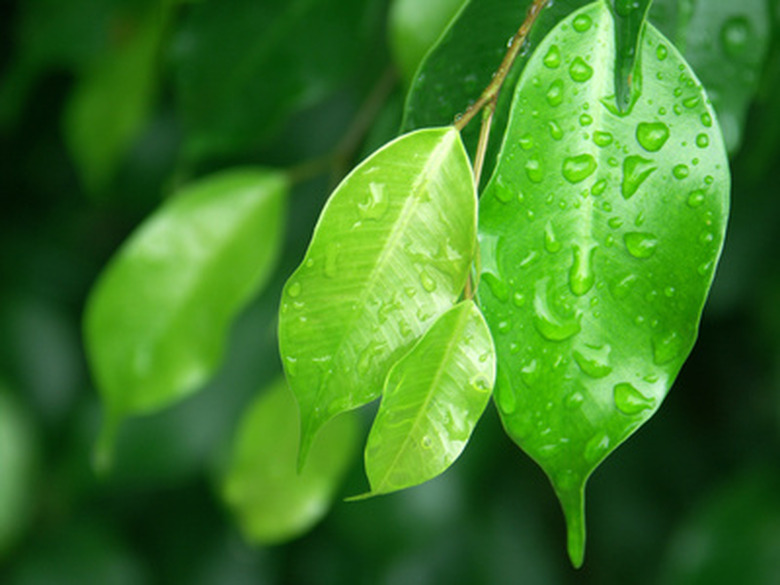The Best South Florida House Plants
Growing plants indoors is very popular, but providing the right conditions for them can be difficult in homes that receive little light or are constantly air conditioned. Tropical plants well-suited to living outdoors in semi-tropical South Florida will adapt to indoor growth and often are grown as houseplants, but take care to provide adequate light and humidity for best results, or choose plants that do well under low light and humidity.
Christmas Cactus
Christmas cactus (Schlumbergera spp.), also known as Easter cactus, is not a true cactus but is a succulent plant that prefers nutrient-rich, well-drained soil. Christmas cactus grows easily and prefers partial shade, but high light intensity encourages blooms. The form of a Christmas cactus has multiple branches, flattened, succulent joints with flowers variable by species and hybrid. Flowers range from white, pink, violet and combinations of colors that sometimes are difficult to bloom. Christmas cactus likes cooler nights for proper blooming, which can be difficult in South Florida. Overcome this by placing a dark cloth over the plant for 13 hours a night late in September to mid-October, according to University of Florida extension, or place the houseplant outside in natural light conditions until buds develop. Keep soil evenly moist to slightly dry and fertilize with half doses of liquid fertilizer every other week during blooming and six weeks after blooming.
- Growing plants indoors is very popular, but providing the right conditions for them can be difficult in homes that receive little light or are constantly air conditioned.
- Tropical plants well-suited to living outdoors in semi-tropical South Florida will adapt to indoor growth and often are grown as houseplants, but take care to provide adequate light and humidity for best results, or choose plants that do well under low light and humidity.
Weeping Fig
Weeping fig (Ficus benjamina) is an evergreen tree with a heavily foliated, dense, symmetrical canopy, grown often as an interior tree. Ficus prefers full sun to partial shade and an evenly moist soil, but allow soil to dry slightly between watering. Ficus tolerates low humidity, but may lose leaves in low-light conditions. Fertilize ficus trees monthly.
Lady Palm
Lady palm (Rhapis excelsa) is a small palm and commonly 6 to 10 feet tall, but it can be a container plant grown indoors. Lady palms do well with indirect, filtered sunlight, moist soil and medium humidity. Its form is made up of multiple slender stems covered with heavy fiber and crowns of fan-like leaves growing up to 1 foot long. Fertilize lady palms monthly with 1/4 doses of common liquid fertilizer September through February.
- Weeping fig (Ficus benjamina) is an evergreen tree with a heavily foliated, dense, symmetrical canopy, grown often as an interior tree.
- Lady palm (Rhapis excelsa) is a small palm and commonly 6 to 10 feet tall, but it can be a container plant grown indoors.
Ponytail Palm
Ponytail palms (Nolina recurvata) are evergreen trees with a rounded and single-stemmed form when young, but branched when older. Ponytail palms are fine textured, with long thin leaves up to 5 feet long. Its name comes from leaves that cluster at the tips of the branches and cascade downward. Ponytail palms have showy, creamy-yellow flowers that bloom up to three times a year. This tree has many ornamental uses, including as a houseplant. It prefers full sun or partial shade and grows on a variety of well-drained soils. Ponytail palms do not need a lot of water because they are native to dry regions of Mexico and very drought tolerant. Fertilize ponytail palms monthly during the summer.
- Ponytail palms (Nolina recurvata) are evergreen trees with a rounded and single-stemmed form when young, but branched when older.
References
- Hendry County Extension: Christmas Cactus- A Great Holiday Gift Idea
- "Landscape Plants For Subtropical Climates"; Bijan Dehgan; 1998
- Mother Nature's Secrets for Thriving Indoor Plants; James Gick; 1975
- University of Arkansas Extension: Ponytail Palm- Plant of the Week

